Opinion & Analysis
The Real Cost of Golf

The USGA exists “for the good of the game” and the PGA has authored several initiatives in a concerted effort to “grow the game.” Noble aspirations, indeed. However, where the proverbial rubber meets the road is you.
The bottom line is this: The game needs more players, badly. If golf is to remain “the greatest game ever played,” then it needs to keep the players it has and perhaps more importantly, attract new players to the game. As stated in the PGA’s Golf 2.0 initiative, the goal is to go from 26.1 million golfers and $33 billion in consumer spending in 2011 to 32 million golfers and $35 billion in spending by 2016.
To give you a little perspective, in 2005 there were 30 million golfers. That means from 2005 to 2011, the game lost nearly 4 million players and this coupled with a downturn in the world economic climate has left people rethinking the realities of squeezed disposable income and the game in desperate need of fresh chum. So no matter who you are, you are valuable to the game on both a commercial and philosophical level.
The rest of the conversation is just how fat of a check are you going to write? For illustrative purposes, let’s look at three composite individuals and what it would cost them to take up the game and play for a year.
The Novice, aka Nancy Newbie and Beginner Bob
You are new to the game and other then generally knowing which end of the club to hold and which direction the course goes, you don’t know Freddie Couples from Freddie Mercury. It’s OK, you don’t have to. Yet.
What’s in the bag?
A nice used set of irons from five to eight years ago. Maybe some Titleist 735 CM irons, a couple Cleveland 588 wedges, a Ping Zing putter, a TaylorMade R580 driver and the V-Steel 3 and 5 woods. Thanks to your local garage sale, you got all of this in a old original Ping Hoofer for $200.
Balls/Gloves/Tees: You play the balls you find…in the garage…in the woods…in your buddies bag…Same goes for gloves and tees: $15
Course of Choice: You don’t play enough to justify an annual pass, but you may invest in a “discount card” or take advantage of coupons in the local “Gold-C” or similar offering. You’re lucky to play 8 to 10 times a year and at $25 per round, you get a lot of golf for $250 a year.
Apparel: Yeah, about that. You’re closet may not be full of golf specific clothing, but you have enough to get by. You may have accidentally bought a pair of khaki Dockers at Kohl’s on clearance, but you will need to get a decent pair of golf shoes. $75 should get it done.
Tourney/League: You’re not quite dedicated enough to commit to a weekly league, but you might jump into a scramble tournament every now and again. $125
Lessons/Practice: Your play is your practice. You haven’t taken any formal lessons yet, but you have a number of friends who are more than willing to give you free advice, and more often than not, it’s worth exactly what you pay for it. $0
Training Aids: Nope. $0
Total cost for one year of golf: About $665, but let’s just round it up to $700 and call it $50 to $75 per month. Not bad at all, and cheaper than what you probably drop on those double-mocha-machiato-latte-thing-a-ma-bobbers.
The Enthusiast, aka The guy who bombs a drive and says “Bang”
You’ve probably been bitten by the bug at some point. Maybe it was a charity scramble or a golf league you played in before you “found yourself,” then found a job and subsequently found yourself with a lot less time.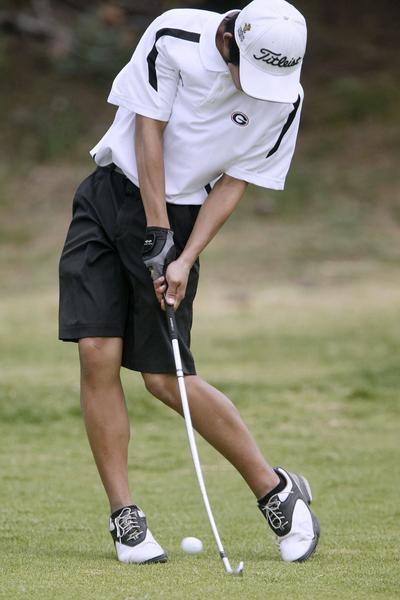
Now, things are different. You have a bit more time, a bit more income and most importantly, a renewed desire to break 90 or 80 or a few less windows. Call it a golfing renaissance, if you will. You may not DVR the Shell Houston Open, but you remember Jack in ‘86 and you have the big ol’ MacGregor putter to prove it.
What’s in the bag?
You have a mix of old and new, but as part of your rededication to the game you submit to the reality that technology has passed your bag by and it’s time to upgrade. You’re not beyond looking at models from the last couple seasons, especially given how quickly clubs depreciate!
Irons: Inspired by Brian Gay (rocked a combo set of Mizuno MP-60 and MP-32 irons to win at the Humana Challenge earlier this year) and D.A. Points (gamed a set of Ping G5s to win at The Shell Houston Open), you nab a solid set of slightly used Ping G20s for $250. Of course, you really have your eye on some Mizuno JPX-825 Pros, but those will run you $900 at a minimum.
Woods: You get fitted for some new TaylorMade woods and want the option of adjustability so, you snag a R11 TP for $75 and get a matching 3 wood and hybrid for another $100 to $175 total. But, if you grab the Mizuno’s, you can’t have your woods looking old and used, so there is the option of dropping $600 for a new Stage 2 driver and a couple fairway woods to match.
Wedges: At $40 a piece, you can’t pass up the hardly used Vokey SM line. Sure, they don’t have conforming grooves, but you don’t care — 2024 might as well be 11 years away. $120 for a set of three, or you can go the new route and for $340 you can be the one to take the plastic off each one and get your kids’ initials stamped on.
Putter: $70 for a close out model of an Odyssey White Hot with flow neck, ala your favorite middle-aged putter, Steve Stricker.
Balls/Gloves/Tees: Tees are cheap enough and you found this local big box store that allows you to buy a bag for $10 and you get free refills for the year. A couple two-packs ($35) of the FootJoy synthetic leather WeatherSof gloves should hold you over and in addition to keeping any of the decent balls you find on the course, you snag three dozen of the 2012 Bridgestone B330 RX balls for $75.
Course of Choice: You don’t know if you’re ready to take the leap into the private/country club scene, but a higher-end public/semi-private course is certainly within reach. You can play as much as you’d like and whether you run out for a quick 9 holes after work or play five holes before the rain comes in, it’s all covered. In addition, a quality public/semi-private course will have all of the requisite practice facilities so you can work on all parts of your game, rain or shine. Usually, those run around $2200/year. If that’s a little steep, you can go the daily fee route, but if you’re going to get in 20-plus rounds this season, the annual pass is a more economical decision.
Apparel: Your closet can’t escape your rediscovered passion. So, after consulting a couple episodes of “What not to wear” you go with a very solid combination of four shirts ($100), four shorts ($140), one pair of pants ($50), and a convertible wind/rain jacket ($85). Just for good measure you buy a new Titleist hat ($25) (hey, it’s the mark of a player, right?) and a pair of FootJoy Tour Saddle shoes ($150)
Tourney/League: Between the weekly men’s league ($10 green fees are covered in your membership, but the money game and skins aren’t) and men’s association tournaments ($250 for the year) you should have a variety of competitive outlets to offer your game every litmus test it needs.
Lessons/Practice: You can practice all you want, but if you really want to improve and get the most out of whatever natural ability you have, you’ll need a series of lessons. $400 for five sessions of an hour with video and a nine-hole playing round will certainly help.
Training Aids: You know most of them are gimmicks or can be replicated at your local Home Depot for $10 and a can of spray paint, but the Orange Whip has actually proven to help you work on flexibility, tempo and core strength. $75 well spent!
ETC: You’ve read “5 Lessons” so many times it kind of feels like 35 lessons, and while best practices in teaching/instruction haven’t gone out of style, your library needs some serious updating. $50 gets you a couple books from Dave Pelz, one from Stan Utley and some good stuff to think about from Dr. Gio Valiente.
Total: $4260 to $5555
The GolfWRX-er, aka Captain Staff Bag
You have a dog named Bogey, a den caddy for your TV remote, a putter at the office and you measure storage space in your car in number of bags it can hold.
You memorize shaft bend profile data and you know your kids’ birth years based on club release dates. This is why you refer to your middle son as “R7” and your neighbor as 588. Others claim that there is no one else like you in the world, but you know that’s not true. You’ve “never left yards on the table” and more importantly, you know why that’s funny!
What’s in the bag?
First, let’s be clear that we are referring to your “gamer” bag. Not the back-up bag, third bag or miscellaneous bag of clubs you have which
comprise several attempts at grinding your own wedges, painting club heads and/or something we’ll just politely refer to as “the lime green phase.”
Driver: Like other clubs in your bag, this one is new. You have the TM R1 TP, Titleist 913 D2/D3 or Ping Anser. Secretly, you don’t mind stock shafts, but that wouldn’t be very GolfWRX of you to admit that publicly. Plus, the Tour AD-DI, Mitsubishi Ahina and Fujikura Speeder Tour Spec look so much better, or at least that’s what you keep telling yourself. $600
3 wood: This is a tough one as so many companies have gotten into the “premium” distance 3 wood conversation lately. You really wanted to toss a Tour Edge Exotics XCG 6 in there, but you want the adjust-ability and excuse to have a couple extra shafts just to swap out on an “as-needed” basis. Enter Adams Speedline LS with matching Tour AD-DI 7. Just for good measure, you snag matching 19-degree hybrid with Tour AD DI hybrid shaft. $400 + $300
Miscellaneous
- Bushnell Z6 Rangefinder: $400
- Leather Scorecard holder: $35
- Alignment sticks: $4
- Commemorative divot tool: $15
Balls/Gloves/Tees:
- Titleist Pro V1/V1x, and no less than eight dozen a year: $360
- You’ll go through 12 to 15 FootJoy StaSof gloves during the year at $20 each
- Tees are the one place where you actually don’t break the bank. A couple packages of Epoch Evolves will last you several presidential administrations: $15
Course of Choice: You have a range of options available, including several daily fee public courses which offer annual memberships. Plan on $2500 to $3000 a year to cover annual dues, practice facilities, a locker, cart/trail fee and range balls.
If you decide to go the private route, you might be able to find some equity memberships in the $5000-$10,000 range. In fact, according to a study done by Longitudes Group for Golf Digest, 30 percent of clubs surveyed stated initiation fees of $7,500 or less. The same survey showed average annual dues at $6245 ($520/month). This figure does not include any “assessment” fees or additional costs for food/beverage minimums, bag storage fees, range passes and other ala carte items.
Apparel: Your wardrobe is varied and while you might not be able to pull of the Ricky Fowler “orange construction zone cone” look, you’re not going to run out of options, no matter the season.
This list is rather long so try and stick with me: 12 to 15 shirts in a variety of solids, stripes and you had to toss in a couple neon beauties which would make Olivia Newton John proud! ($450)
You have just as many shorts in just as many styles ($500), but you only need four pairs of pants with v-cut hems no doubt. ($300)
You have four pairs of shoes: one pair of spikeless Ecco’s ($140), one pair of practice shoes — Adidas 360 ATV ($100) — and two pairs of your “tourney” shoes, Ecco Biom Hydromax ($235/pair).
Add that all up and it’s $1960, but at least now you have casual Friday’s covered!
Tourney/League: You may not be out on any official tour, but your friends probably wouldn’t know the difference given the fact you play in the weekly men’s league/money game, all of your club tournaments and an assortment of state amateur events. Moreover, you have the images saved from GoogleEarth and course yardage books to prove it. $1250
Lessons/Practice:
You’re committed to hitting balls a couple days a week, so the season-long range pass pays off handsomely. ($350)
A series of 12 lessons throughout the year will keep your swing sharp, even when the weather doesn’t cooperate. ($1000)
Total that up for a cost around $1350.
Training Aids:
You have the Orange Whip ($75) and EyeLine Edge putting mirror ($60), so that’s $135.
Golf Magazines:
Golf Digest, Golfweek and Golf Magazine have you and your bathroom covered. Admittedly, you always flip to the “WITB” section and require that your neighbors refer to you as “the man out front.” $75
Yearly Total: $13,444
Admittedly, there is quite a jump from the beginning golfer to the enthusiast (nearly $3500) and in all reality, most golfers will be a mix of the listed descriptions. That being said, when you hold these composite figures against a backdrop of recent economic data, we begin to gain a better understanding as to the issues faced by the organizations whose stated dedication is to attract new players.
Golf faces myriad challenges moving forward and while the issue of pace of play has been discussed ad naseum, basic realities of economics hold true. What is more expensive is often less consumed and in a game where volume is what the ruling bodies are after, this is a problem. Consider that the average American household earns $63,091 (before taxes) and has $58,275 in expenses, of which only 1.4 percent is allocated as “entertainment.” This leaves $4816 for all disposable income purchases for the entire household. You don’t need to be Pythagoras or Euclid to figure out why the game is in a bit of a pickle.
The average consumer simply does not have the means to play the game at anything more than a very basic level. As such, the individual is highly unlikely to ever become an “enthusiast” and most certainly not one of “Captain Staff Bags’” playing partners.
Averages certainly don’t reflect specific individual experiences, and one of the greatest intellectual difficulties is resolving the reality of the masses when your individual situation is at odds with the truth shared by most others. The image of golf is still one painted by brush strokes of elitism and exclusion.
If we are honest with ourselves, we know that wealth affords many increased access and opportunity in our market-driven world. It’s a shame that golf, in this regard, is no different. Perhaps we should heed the advice of Franklin D. Roosevelt and agree that “The test of our progress is not whether we add more to the abundance of those who have much; it is whether we provide enough for those who have too little.” I guess it really depends on how much we actually want “to grow the game.”
To that end, here are five ways in which we can make the game more accessible to all:
- Give every kid a free pass to the local city courses in 5th and 6th grade. Kids won’t go by themselves and that means in addition to getting kids hooked, there will be a paying adult. While you’re at it, give adults a 50 percent discount if they play with their 5th or 6th grade student! The ski industry does this all the time and the golf industry could certainly learn a thing or two!
- Offer annual junior passes (ages 12-18) for $99 – Same theory as No 1, but you could add discounts on merchandise/equipment to sink that hook in just a bit deeper.
- Team up with the local school district and offer incentives to golfers who achieve academically. Better GPA = Lower cost for rounds and equipment!
- Hold free/inexpensive teaching seminars. Take a page from Home Depot and give people something of value without asking for anything in return.
- Why only 9 or 18? Why not offer golfers a chance to play 6 holes? Or 12?
- LIKE22
- LEGIT7
- WOW3
- LOL3
- IDHT1
- FLOP1
- OB1
- SHANK3
19th Hole
Vincenzi: The 8 best prop bets for the 2024 Masters
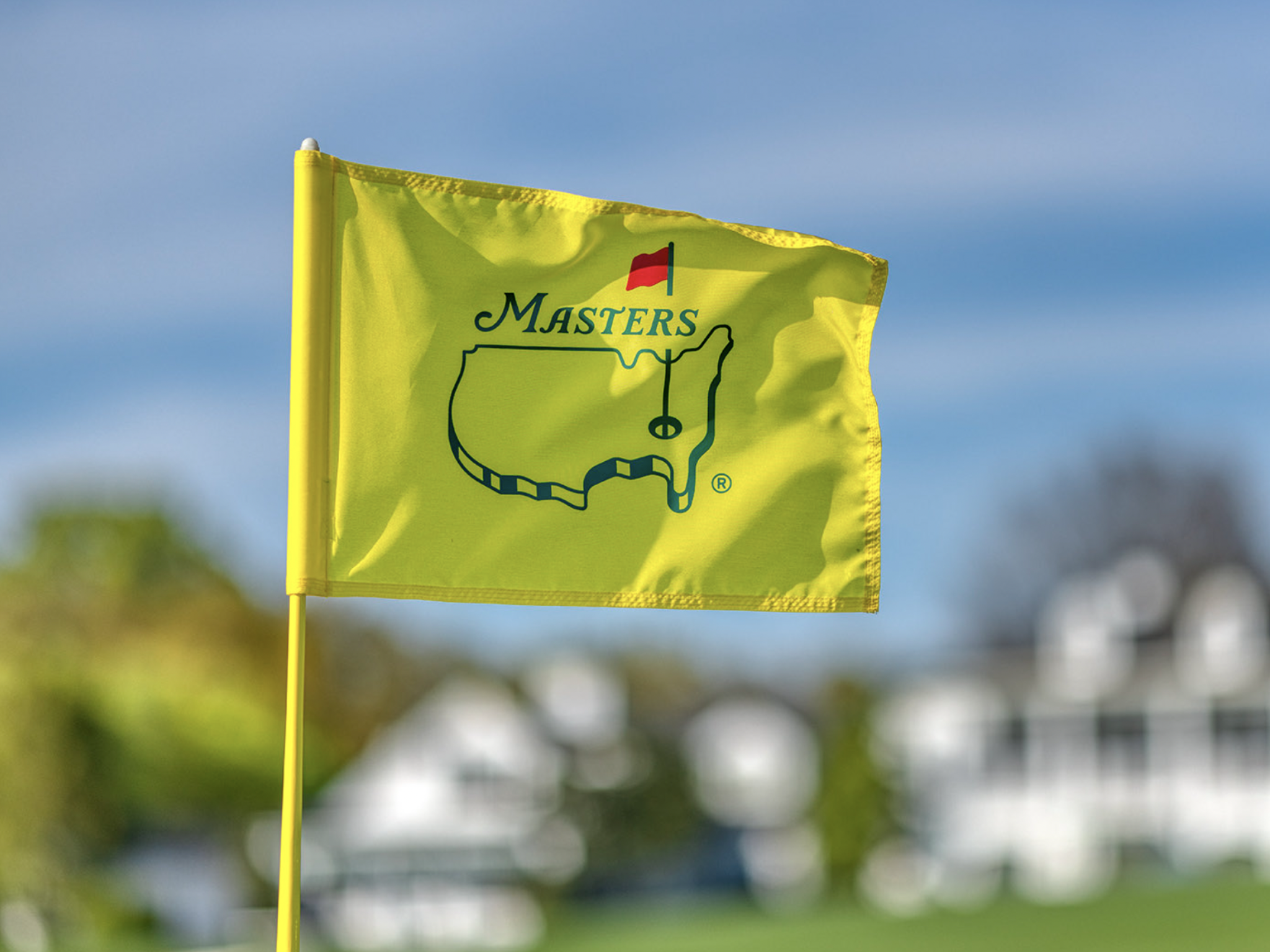
We’ve finally reached The Masters and excitement is at an all-time high. The world of golf has been fractured for the better part of two years, but for a week at Augusta National, all of the outside noise will disappear. All of the best players in the world will be together seeking to make history.
In addition to betting on The Masters champion. This is one of the few weeks of the year where there are so many more markets to explore, with value to be had in plenty of different categories.
Throughout this article, I’ll discuss all of my favorite props and players for the 2024 Masters.
Placement Bets:
Tony Finau Top 5 +750 (DraftKings):
I badly wanted to include Tony Finau in my outright betting selections, but I simply ran out of room on my card. Additionally, it’s slightly difficult to see him hitting the putts necessary to win the Masters on back nine on Sunday. However, I do strongly believe he will play great golf this week at Augusta National.
In his past 24 rounds, Finau ranks 4th in Strokes Gained: Approach is always amongst the best drivers of the golf ball in the game. Back in 2019, Finau had a great chance to win The Masters. I expect him to be hanging around over the weekend once again in 2024.
Gary Woodland Top 20 +550 (DraftKings), Gary Woodland to make the cut -110 (DraftKings):
Last season, Gary Woodland had his best ever finish at The Masters in his eleven tries. The 39-year-old finished T14 and played incredibly steady across all four rounds.
In Woodland’s most recent start at the Texas Children’s Houston Open, he struck the ball incredibly well. He led the field in Strokes Gained: Approach (+8.8) and Strokes Gained: Ball Striking (+10.0).
Gary has been working with Butch Harmon and absolutely flushing the ball both in tournaments and during practice.
Woodland appears to be healthy once again and in a great place physically and mentally. If he can build off his impressive performance at Augusta last year, he can place inside the top ten in 2024.
Additionally, the make the cut number on Woodland seems generous considering the number of players who miss the cut will be relatively small this week. Woodland is striking it well enough to make the cut even if he’s hindered by a balky putter once again.
Thorbjorn Olesen Top 20 +400 (FanDuel):
The Thunder Bear, Thorbjorn Olesen, made his Masters debut in 2013 and finished an incredibly impressive T6 for the week. In the two additional starts he’s made at Augusta National since then, the Dane has continued to be incredibly solid, finishing T44 and T21.
This week, Olesen heads into the week playing some good golf. He gained 3.8 strokes on approach and 5.52 strokes around the green at last week’s Valero Texas Open on his way to a strong T14 finish. Back in January, he won the Ras Al Khaimah Championship on the DP World Tour.
Olesen has the skill set to be successful at Augusta and seems primed for a good performance this week.
Top Nationalities:
Sergio Garcia Top Spanish Player +280 (DraftKings):
I believe Sergio Garcia can get into contention this week with the way he’s striking the ball in addition to his good vibes with a refurbished version of the Scotty Cameron that he used at the 1999 PGA Championship at Medinah.
I am slightly concerned about the emotional letdown he may face after losing in a playoff at LIV Miami, but I believe a veteran and former Masters champion should be able to regroup and focus on an event far more meaningful.
This is essentially a tournament head-to-head with Jon Rahm at +280. While Rahm deserves to be respected this week, the history of the lack of success of defending champions at The Masters is difficult to ignore.
Joaquin Niemann Top South American Player -230 (FanDuel):
While I hate paying this much juice, I don’t see a world in which Joaquin Niemann isn’t the top South American this week at The Masters. Joaco comes in playing better golf than anyone in the world not named Scottie Scheffler and has a serious chance to win the green jacket.
He only needs to beat two players: Emiliano Grillo and Camilo Villegas.
Tournament Head-to-Heads:
Justin Thomas -110 over Collin Morikawa
JT isn’t having his best season but is playing a lot better than he is getting credit for at the moment. In the past three months, there are only six players on the PGA Tour who have averaged 1.7 Strokes Gained: Tee to Green or better. Justin Thomas (+1.7) is one of the six and is currently tied with Rory McIlroy (+1.7).
Morikawa, on the other hand, has been extremely poor with his irons, which is incredibly uncharacteristic for him. I can’t help but feel like something is completely off with the two-time major champion.
Tony Finau -110 over Wyndham Clark
I explained in the placement section why I’m so high on Tony Finau this week. With how well he’s striking the ball, it seems as if his floor is extremely high. I’m not sure if he can make the putts to win a green jacket but I believe he will be in the mix similarly to 2019 when Tiger Woods emerged from a crowded pack of contenders.
Clark is a debutant, and while some debutants have had success at The Masters, it certainly poses a challenge. I also don’t believe Augusta National suits Clark as well as some of the other major championship venues.
- LIKE8
- LEGIT4
- WOW2
- LOL0
- IDHT0
- FLOP0
- OB0
- SHANK2
19th Hole
Vincenzi’s 2024 Masters betting preview: Niemann to play star role at Augusta National

It’s been over nine months since we saw Brian Harman parlay a dominant performance at Royal Liverpool into a claret jug. After another major offseason filled with a feud between the PGA Tour and LIV Golf, talks of a merger, and a multitude of questions regarding the future of the game, the golf world is desperate for all of the best players in the world to come together again for a major championship.
We return to Augusta National with excitement at a fever pitch. Scottie Scheffler has separated himself as the best player in the world heading into the Masters. At the moment, the 27-year-old seems to be an unstoppable force. However, questions about Scheffler’s up-and-down putter once again resurfaced as he missed multiple short putts at the Texas Children’s Houston Open including a 5’11” putt to force a playoff with Stephan Jaeger.
Additionally, a handful of the PGA Tour’s top players such as Justin Thomas, Rory McIlroy, Will Zalatoris, Patrick Cantlay, Tommy Fleetwood and Jordan Spieth make their way to Augusta National with their current form in question.
Plenty of LIV golfers may be up to the task of conquering Augusta, but with so much time in between the last two majors, it’s not always easy to decipher how their games will stack up against Scheffler and co.
Last year, some important changes were made at Augusta National. The par-5 13th (Azalea) was lengthened by 35 yards and now measures 545 yards. Last year, Azalea played as the toughest of the four par 5s, and players averaged 4.74 for the week, which was down from 4.85 in 2022. However, eagles, birdies and bogeys were all up, so the lengthening achieved less pars, which equals more excitement.
Without further ado, let’s get into the course breakdown and analyze some important statistics for Augusta National.
Augusta National is now a 7,510-yard par-72 with lightning-fast Bentgrass greens. The course’s primary defenses are the contoured greens, swirling crosswinds, the topography of the course, which creates uneven lies and the small landing areas that golfers will need to hit to avoid tight run-off areas around the greens.
Past Winners at the Masters
- 2023: Jon Rahm (-12)
- 2022: Scottie Scheffler (-10)
- 2021: Hideki Matsuyama (-10)
- 2020: Dustin Johnson (-20)
- 2019: Tiger Woods (-13)
- 2018: Patrick Reed (-15)
- 2017: Sergio Garcia (-9)
- 2016: Danny Willett (-5)
- 2015: Jordan Spieth (-18)
- 2014: Bubba Watson (-8)
- 2013: Adam Scott (-9)
- 2012: Bubba Watson (-10)
- 2011: Charl Schwartzel (-14)
- 2010: Phil Mickelson (-16)
In this article and going forward, I’ll be using the Rabbit Hole by Betsperts Golf data engine to develop my custom model. If you want to build your own model or check out all of the detailed stats, you can sign up using promo code: MATTVIN for 25% off any subscription package (yearly is best value).
Key Stats For Augusta National
Let’s take a look at the six most important metrics at Augusta National and determine which golfers boast top marks in each category over their last 24 rounds. This should give us a good starting point for building out a betting card.
Strokes Gained: Approach
Approach is historically the most important statistic at Augusta National. The sloping, speedy greens and run-off areas create small landing spots that can be difficult to hit.
Last year, Jon Rahm ranked 6th in the field in Strokes Gained: Approach. Overall, five of the past seven winners at Augusta have ranked in the top 6 in the category. Distance helps, but Augusta National is a second-shot golf course.
Total Strokes Gained: Approach in past 24 rounds:
- Scottie Scheffler (+1.30)
- Corey Conners (+0.99)
- Shane Lowry (+0.88)
- Tony Finau (+0.85)
- Austin Eckroat (+0.85)
Course History
More so than any other course on TOUR, familiarity with Augusta National is crucial. Only one player has ever won the Masters on their first try — Fuzzy Zoeller in 1979. Meanwhile, there are 17 golfers in history who have multiple green jackets.
In most cases, the Masters champion has shown some good form at Augusta in the past. Prior to Scottie Scheffler’s 2022 victory, he finished T19 and T18 in his first two trips to the course. Prior to 2023, Rahm had finished in the top-10 of four of his six starts at The Masters.
Total Strokes Gained: Total at Augusta National in past 36 rounds (per round, minimum eight rounds):
- Will Zalatoris (+2.91)
- Jon Rahm (+2.28)
- Jordan Spieth (+2.22)
- Scottie Scheffler (+2.22)
- Dustin Johnson (+2.01)
- Rory McIlroy (+2.00)
- Hideki Matsuyama (+1.90)
- Justin Rose (+1.85)
- Rickie Fowler (+1.72)
- Russell Henley (+1.60)
Par 4 Scoring Average
Since plenty of players can reach the par 5s at Augusta in two, par-4 scoring becomes more important. The golfer who separates themselves on the par 4s will be able to gain ground on the field.
Par 4 Scoring Average in past 24 rounds:
- Scottie Scheffler (+3.88)
- Chris Kirk (+3.92)
- Jordan Spieth (+3.93)
- Peter Malnati (+3.93)
- Xander Schauffele (+3.93)
Strokes Gained: Around the Green
Golfers with a solid short game tend to fare well at Augusta National. The run-off areas are treacherous, and players will often be scrambling to get up and down.
The majority of players who have won at Augusta National have a great short game and have shown consistent ability to get up and down from tough spots.
Total Strokes Gained: Around the Green in past 24 rounds:
- Hideki Matsuyama (+0.71)
- Scottie Scheffler (+0.66)
- Patrick Reed (+0.61)
- Xander Schauffele (+0.53)
- Lucas Glover (+0.51)
Strokes Gained: Off the Tee
Augusta National is most definitely a second shot golf course. Golfers can get away with a missed fairway here and there, however, it’s important that the misses with driver aren’t too wide of the target or there is serious trouble to be had.
Total Strokes Gained: Off the Tee in past 24 rounds:
- Bryson DeChambeau (+1.04)
- Rory McIlroy (+0.85)
- Scottie Scheffler (+0.84)
- Xander Schauffele (+0.71)
- Ludvig Aberg (+0.68)
Strokes Gained Putting: Fast Bentgrass
The USGA calculates that, on average, the greens at Augusta National are the fastest greens in the country. Three-putting is fairly common at Augusta and golfers must be able to combat the speed of the greens with effective lag putting.
Total Strokes Gained: Putting on Fast Bentgrass in past 24 rounds:
- Justin Rose (+1.43)
- Sahith Theegala (+0.97)
- Min Woo Lee (+0.88)
- Cameron Smith (+0.70)
- Patrick Reed (+0.70)
Statistical Model
Below, I’ve reported overall model rankings using a combination of the six key statistical categories previously discussed.
These rankings are comprised of SG: App (25%); Course History (16%); Par 4 Scoring Average (10%); SG: Putting on Fast Bentgrass (16%); SG: OTT (16%). and SG: ARG (16%).
Last year, Jon Rahm ranked first in this model
- Scottie Scheffler
- Xander Schauffele
- Hideki Matsuyama
- Tony Finau
- Justin Thomas
- Shane Lowry
- Will Zalatoris
- Corey Conners
- Si Woo Kim
- Rory McIlroy
- Stephan Jaeger
- Jordan Spieth
- Chris Kirk
- Keegan Bradley
- Wyndham Clark
- Sahith Theegala
- Russell Henley
- Collin Morikawa
- Matt Fitzpatrick
- Patrick Reed
My 2023 Pick:
Jon Rahm (+950) (FanDuel)
A few months ago, I never thought that I’d be able to say that Rahm would be going slightly under the radar heading into the 2023 Masters. It’s not that Rahm has done anything wrong, but both Scheffler and McIlroy have undoubtedly surpassed him as the scorching hot, super-elite, top of the market betting favorite category.
Since his win at Riviera, the Spaniard has finished 39th at Bay Hill, withdrew at The Players Championship, and failed to get out of the group stage at the WGC Dell Match Play. On the other hand, Scheffler won The PLAYERS Championship and McIlroy finished third at the WGC Dell Match Play.
Rahm has made six starts at The Masters and has come in the top-10 in four of them. The 28-year-old has incredible power off the tee, a requirement at Augusta which always plays longer than the scorecard indicates. He’s also incredible around the greens and ranks third in the field in Strokes Gained: Short Game, which is a combination of around the green play and putting, in his past 24 rounds.
As we’ve seen over the years at The Masters, having the ability to chip and putt your way out of difficult situations is a fundamental aspect of getting it done at Augusta National.
While Scheffler has made a strong case to be viewed as the world’s best player, I still believe that title belongs to Rahm. This will be the year Rahmbo joins the ranks of Seve Ballesteros, José María Olazábal, and Sergio Garcia as natives of Spain to don a green jacket.
2024 The Masters Picks
Brooks Koepka +2500 (DraftKings)
In order to win the 2024 Masters, a player will have to go toe-to-toe with Scottie Scheffler, who’s hitting the ball as anyone in golf over the last two seasons. When building a betting card this week, it’s important for me to choose players that I believe can stare Scheffler down on the weekend at Augusta National. Brooks Koepka fits that bill.
Koepka’s lackluster performance at LIV Miami is concerning, but he’s the type of player who can turn it on quickly during the week of a major championship. Although I’d have preferred, he played well last week, I’ll take the odds discount we got as a result of his most recent results.
Prior to LIV Miami, Koepka appeared to be in solid form. He finished in the top twelve in four of five starts on LIV this season. When it comes to the five-time major champion, it’s well known that he has another gear for major championships. Everything he’s done both in the off-season and during the LIV season is to gear up for the year’s first major at Augusta National.
In his past five starts at Augusta National, the 33-year-old has three top-7 finishes, including two runners-up. The two years when he played poorly (2019 and 2020) were when he was nowhere near 100% healthy. All signs point to Brooks being in a great place physically as we enter major season.
Last year, Koepka was the 36 and 54-hole leader prior to letting the green jacket slip away to Jon Rahm. He used the result as a springboard to win his 5th major at Oak Hill at the PGA Championship.
Brooks enters the week looking to get one step closer to achieving the career grand slam and golf fans would be foolish to rule him out.

Joaquin Niemann +2800 (BetRivers)
Full disclosure, I bet Niemann the second he was invited to The Masters back in February at +8000. Although the odds have shortened dramatically since then, I can’t pretend that the Chilean isn’t one of the players who has a real chance to win the 2024 Masters.
While I was speaking with Niemann back in March, he told me how much he loves Augusta National.
“Yeah, it’s a place that I love. I’ve been playing good golf. Especially last year, I wasn’t playing my best golf, and I had a good week there and made triple on 11 that kind of killed me a little bit.
I feel like I’m getting more ready and more prepared every time. My game is getting better too. I know that I’m playing good enough to be in that situation that I can have a chance to win the Masters and it’s all about how I react to that situation.
So yeah, I’m going to prepare myself to be ready for that situation if it happens and I can fight for the title on the Sunday which would be awesome.”
As Niemann alluded to, the Chilean was able to have his best career finishes at The Masters (T16) despite not being in the best form. This year, Niemann comes into the week playing better golf than anyone in the world with the exception of Scottie Scheffler. The 25-year-old has won three times since December and has shown the world why he was regarded as one of the games future stars since he was a teenager.
Historically speaking, Joaco’s win at Riviera a few years back seems to be an indicator of potential success at Augusta National. Fourteen players have won at both historic courses including Hideki Matsuyama, Jon Rahm, Phil Mickelson, Dustin Johnson, Nick Faldo, Tom Watson and Ben Hogan.
Niemann has all the shots to be successful at Augusta National. His low stingers will come in handy on plenty of holes down the stretch and he can work it both ways, playing the high draw or the low fade. He also putts best on Bentgrass greens and likes them fast. Whether PGA Tour or LIV, talent will always reign supreme, and I’ll always bet on that talent.

Cameron Smith (+4000) (FanDuel)
Cameron Smith is another player who we should get an odds discount on based off of the results at LIV Miami. Smith was forced to withdraw prior to the second round due to food poisoning. In my opinion, the number has drifted to a place where I’d consider it a “bet the number” play on the talent.
Smith is a contender for the green jacket anytime he tees it up at Augusta National. The Australian absolutely loves the golf course and has four top-10 finishes in his last six trips to the golf course. In both 2020 and 2022, Smith had a real chance of winning The Masters and came up just short, finishing T2 and T3 in those two tries. In his past 36 rounds, he ranks 4th in Strokes Gained: Total per round at Augusta.
In order to be successful at Augusta National, players must be creative around the greens and be shot makers who have plenty of ways to get around the golf course. Cam has all the shots required to be successful at the course at his touch around the greens will continue to serve him well in his hopes for a green jacket.
Smith is arguably the best putter in the world and has the capability to win a golf tournament on and around the greens. He’s already taken down Rory McIlroy at the home of golf on his way to a claret jug and is one of the few players who can stare down any of the world’s top golfers on the back nine at Augusta National.

Justin Thomas +4000 (FanDuel)
With how he’s been playing since his 2022 PGA Championship win, you may be shocked to see the name “Justin Thomas” in this preview. However, JT has drifted to a place on the odds board where I believe it’s worth taking a shot on the talent of a two-time major champion in his prime.
It’s not all bad for Thomas this season. He finished T6 at the signature Pebble Beach event, T12 at the Waste Management Phoenix Open and T12 at the signature Arnold Palmer Invitational. In his last 24 rounds, JT ranks 8th in the field in Strokes Gained: Approach, 14th in Strokes Gained: Around the Green and 29th in Strokes Gained: Putting on fast Bentgrass greens.
Despite missing the cut last season, Thomas has played pretty well at Augusta National. He ranks 13th in Strokes Gained: Total in his past 36 rounds at the course. He finished T4 in 2020, T21 in 2021 and T8 in 2022.
I believe the 2024 edition of The Masters is completely wide open. The past few years has been frustrating for Thomas fans, but I believe his peak form may be a bit closer than people realize.
Sergio Garcia +12000 (FanDuel)
Earlier this season, Garcia dueled with Joaquin Niemann before finally losing on the fourth playoff hole late into the night. Despite the loss, the 44-year-old seemed to gain confidence in his game. The results that followed weren’t spectacular, but in terms of his ball striking he’s shown some flashes of vintage Sergio.
At LIV Miami last week, Garcia played well on a massive golf course, losing in a playoff to Dean Burmester. He continued pumped the ball into the fairway and hit massive iron shot after massive iron shot. He also used a refurbished Scotty Cameron that he used in the 1999 PGA Championship at Medinah. The putter served him incredibly well until he missed a short putt on the 18th hole to win the event. Overall, he gained 7.1 strokes putting at Doral.
Sergio Garcia is once again headed to Augusta National with a chip on his shoulder. Of course, having a chip on the shoulder is nothing new for the fiery Spaniard, but this year, the 2017 Masters Champion will arrive at Augusta with his game clicking on all cylinders.
Sergio winning a second green jacket is seemingly an almost impossible feat, but magical things tend to happen on the hallowed grounds of Augusta National.

Adam Scott +11000 (FanDuel)
Betting Adam Scott over the past handful of years has been a Masters staple for me, and like many traditions, has been a hard one for me to let go of.
Last week, Scott finished T14 at the Valero Texas Open in a windy and difficult week. I believe the wind will be a major factor this week at Augusta National, and the more difficult the tournament plays, the more I favor Scott. Scott also ranks 5th in his past 24 rounds on Strokes Gained: Putting on Fast Bentgrass and has the short game these days that could help him contend in a major.
Since his win in 2013, Scott’s history at The Masters has been spotty. He has some poor finishes alongside a T9 in 2017 and a T18 in 2019. He’s been playing some solid golf this season, finishing T8 at the Waste Management Phoenix Open and T19 at the Genesis Invitational.
(All photos in piece belong to LIV Golf)
- LIKE35
- LEGIT22
- WOW8
- LOL2
- IDHT0
- FLOP5
- OB1
- SHANK17
Opinion & Analysis
The 22 players who can win the Masters
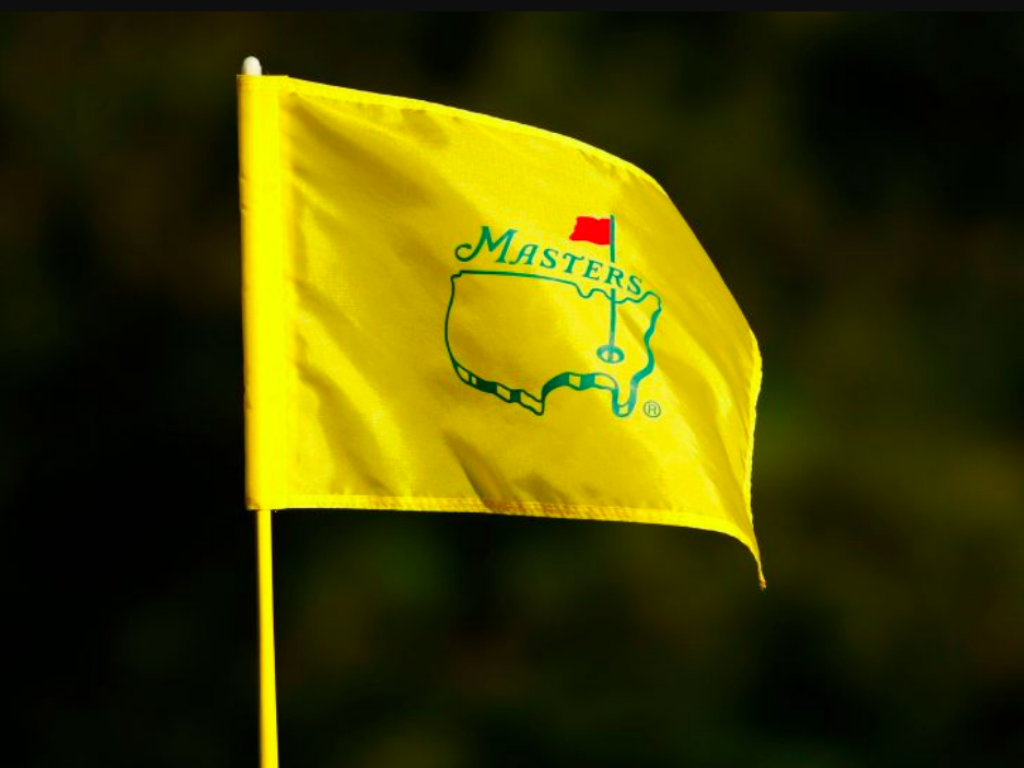
Since 2013, I have created a filtering process to help determine the players who are most likely to win the green jacket based on criteria that have strongly predictive outcomes to success at Augusta. The list of players that can win at Augusta is usually filtered down to 20-24 players and in that time I have correctly shortlisted every Masters champion.
This includes last year’s winner, Jon Rahm. Even though Rahm essentially walked away with the green jack and did not make it very close, there were some close calls on top of the leaderboard as I had filtered out Phil Mickelson (t-2nd) and Patrick Reed (t-4th) as the LIV Tour is still behind on providing advanced analytics for their tour. Russell Henley was also filtered out and finished t-4th, five strokes from Rahm’s winning score of 276.
If you’re watching at home, the “critical holes” that will likely determine the top finishers will be holes No. 7, 8, 11 and 13. The 11th hole is projected to be the most critical of holes as over the past five Masters the top players have gained nearly a 1.5 strokes for the tournament on that hole alone.
Just like last year’s column I will get the LIV Tour players I’ve filtered out of the way. Since LIV Tour does not provide ShotLink or Trackman data, it’s more of a guessing game as to how certain LIV Tour golfers are playing. I did utilize recent performance as well as performance at Mayakoba and Doral as they were two former PGA Tour courses that have some semblance of crossover to playing Augusta.
Phil Mickelson
Thorbjorn Olesen
Charl Schwartzel
Cameron Smith
Bubba Watson
Admittedly Cameron Smith and Phil Mickelson are hard to leave out, but both have not played well as of late.
Next, I filtered out the amateurs and all first-time professional attendees. The Masters has only been won three times by a first-time attendee: Fuzzy Zoeller was the last to win in 1979. Prior to Zoeller though, it was Horton Smith in the inaugural event in 1934 followed by Gene Sarazen in 1935
Ludvig Aberg
Akshay Bhatia
Wyndham Clark
Eric Cole
Santiago de la Fuente (a)
Nick Dunlap
Austin Eckroat
Stewart Hagestad (a)
Ryo Hisatsune
Lee Hodges
Nicolai Hojgaard
Stephan Jaeger
Jake Knapp
Christo Lamprecht (a)
Peter Malnati
Denny McCarthy
Grayson Murray
Matthieu Pavon
Adam Schenk
Neal Shipley (a)
Jasper Stubbs (a)
Out of the first time invitees the data likes Ludvig Aberg and Eric Cole to play the best at Augusta National.
I also filter out old Masters champions that I do not believe can get into contention anymore.
Fred Couples
Jose Maria Olazabal
Vijay Singh
Mike Weir
Tiger Woods
Recency has a strong predictive value for player performance and missing the cut in the event in the prior week greatly reduces the likelihood of winning the following week compared to players that miss the cut, take a week off, and then play the following week. Therefore I filter out all players that missed the cut at the Valero Texas Open last week.
Byeong Hun An
Harris English
Rickie Fowler
Ryan Fox
Zach Johnson
Tom Kim
Erik van Rooyen
Camilo Villegas
I will also filter out the players that have never made the cut at the Masters:
Kurt Kitayama
Adrian Meronk
A Tradition Unlike Any Other…
Augusta National has traditionally favored longer hitters and even moreso in the past 20 years of the event. Of course there has been exceptions as in 2007 the short hitting Zach Johnson ended up winning the event.
Critics of my filtering system point out Johnson’s victory as a case for short hitters being able to win at Augusta, but they neglect the fact that Johnson’s victory came in historically low temperatures in the 40’s with wind gusts reaching 35 mph. That made the par-5’s almost unreachable in two shots and the course stressed wedge play and short game around the green where Zach had a sizable advantage.
It is projected to rain early on Thursday and then the weather is supposed to be sunny and warm for the rest of the week. It depends on how quickly the course dries up, but if it does dry out fairly quickly that will give the longer hitters the advantage as they will be able to reach certain par-5’s in two shots that the shorter hitters cannot reach if they don’t hit a quality tee shot and there may be par-5’s that some of the long hitters can reach in two shots with a short iron. Therefore I will filter out the following players due to a lack of distance off the tee:
Corey Conners
Lucas Glover
Emiliano Grillo
Brian Harman
Si Woo Kim
Chris Kirk
Shane Lowry
Colin Morikawa
JT Poston
Justin Rose
Sepp Straka
Out of these players the data likes Lowry and Morikawa the most. Both have good history at Augusta and they both just narrowly missed the distance benchmark set in the filter and both are excellent long iron players.
Last year I created a new formula to better determine ball height as Augusta has historically not taken too kindly to a low ball flight. Out of the 5 players filtered out for low ball flight using the new formula the best finish was only t-29th by Si Woo Kim. This year I’ve filtered out the following players.
Matthew Fitzpatrick
Sungjae Im
Luke List
Joaquin Niemann
Justin Thomas
Every year I filter out the poor performers on approach shots from 175-225 yards as Augusta National puts a lot of stress on those shots. Last year I filtered out nine players and three of them missed the cut with only Jordan Spieth finishing in the top-15 (t-4th) as the rest of the players were never a threat.
Here are the golfers I’m filtering out due to poor play from 175-225 yards:
Patrick Cantlay
Cameron Davis
Jason Day
Tommy Fleetwood
Russell Henley
Max Homa
Rory McIlroy
Jordan Spieth
Nick Taylor
Rory had a nice outing at the Valero Texas Open and hit his irons better there, but appears to be struggling with a leftward miss. Other than that, Rory still has the game to win his first green jacket. Henley is usually one of the better iron players on Tour, but he has struggled this season from 175-225 yards and is a short hitter anyway.
I will also filter out Danny Willett as he is coming off injury and making his comeback at the Masters.
That leaves the 22 players that can win the Masters:
Keegan Bradley (150/1)
Sam Burns (60/1)
Bryson DeChambeau (25/1)
Tony Finau (50/1)
Sergio Garcia (100/1)
Adam Hadwin (175/1)
Tyrrell Hatton (80/1)
Viktor Hovland (35/1)
Dustin Johnson (40/1)
Brooks Koepka (16/1)
Min Woo Lee (70/1)
Hideki Matsuyama (20/1)
Taylor Moore (300/1)
Jon Rahm (12/1)
Patrick Reed (80/1)
Xander Schauffele (18/1)
Scottie Scheffler (4/1)
Adam Scott (100/1)
Sahith Theegala (50/1)
Gary Woodland (250/1)
Cameron Young (50/1)
Will Zalatoris (35/1)
Here’s my personal top-10 picks:
Keegan Bradley (150/1)
Sam Burns (60/1)
Bryson DeChambeau (35/1)
Tony Finau (50/1)
Viktor Hovland (35/1)
Dustin Johnson (40/1)
Hideki Matsuyama (20/1)
Jon Rahm (12/1)
Xander Schauffele (18/1)
Scottie Scheffler (4/1)
- LIKE178
- LEGIT73
- WOW22
- LOL24
- IDHT5
- FLOP11
- OB6
- SHANK60
-

 19th Hole2 weeks ago
19th Hole2 weeks agoJohn Daly stuns fans into silence with brutal opening tee shot on PGA Tour Champions
-

 19th Hole1 week ago
19th Hole1 week agoThings got heated at the Houston Open between Tony Finau and Alejandro Tosti. Here’s why
-

 19th Hole2 days ago
19th Hole2 days agoTiger Woods arrives at 2024 Masters equipped with a putter that may surprise you
-

 19th Hole1 day ago
19th Hole1 day agoDave Portnoy places monstrous outright bet for the 2024 Masters
-

 19th Hole1 week ago
19th Hole1 week agoReport: Tiger Woods has ‘eliminated sex’ in preparation for the 2024 Masters
-

 19th Hole2 weeks ago
19th Hole2 weeks agoCharlie Woods finds it tough going on American Junior Golf Association debut
-
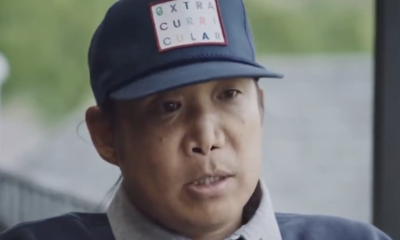
 19th Hole1 week ago
19th Hole1 week agoAddiction, spinal fusion, and scam artists – Everything Anthony Kim revealed in candid interview with David Feherty
-
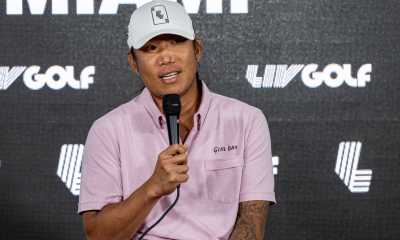
 19th Hole6 days ago
19th Hole6 days agoAnthony Kim says doctors told him that he ‘may not have much time left’ ahead of LIV return

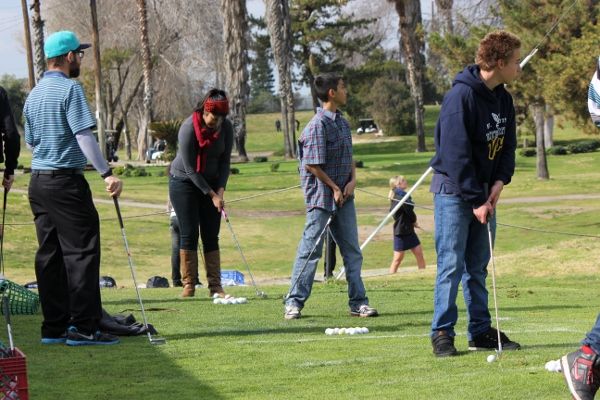
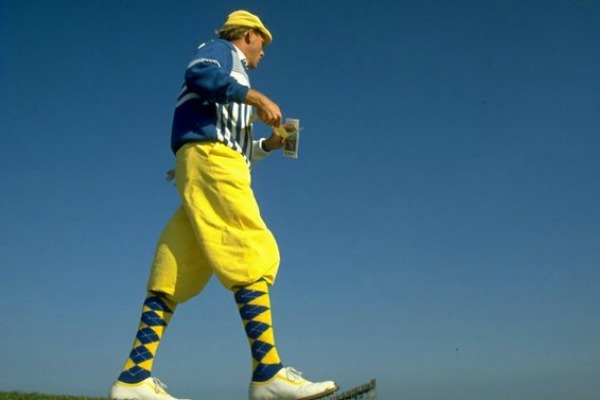


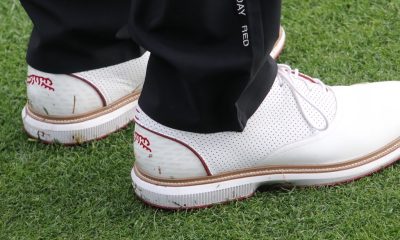



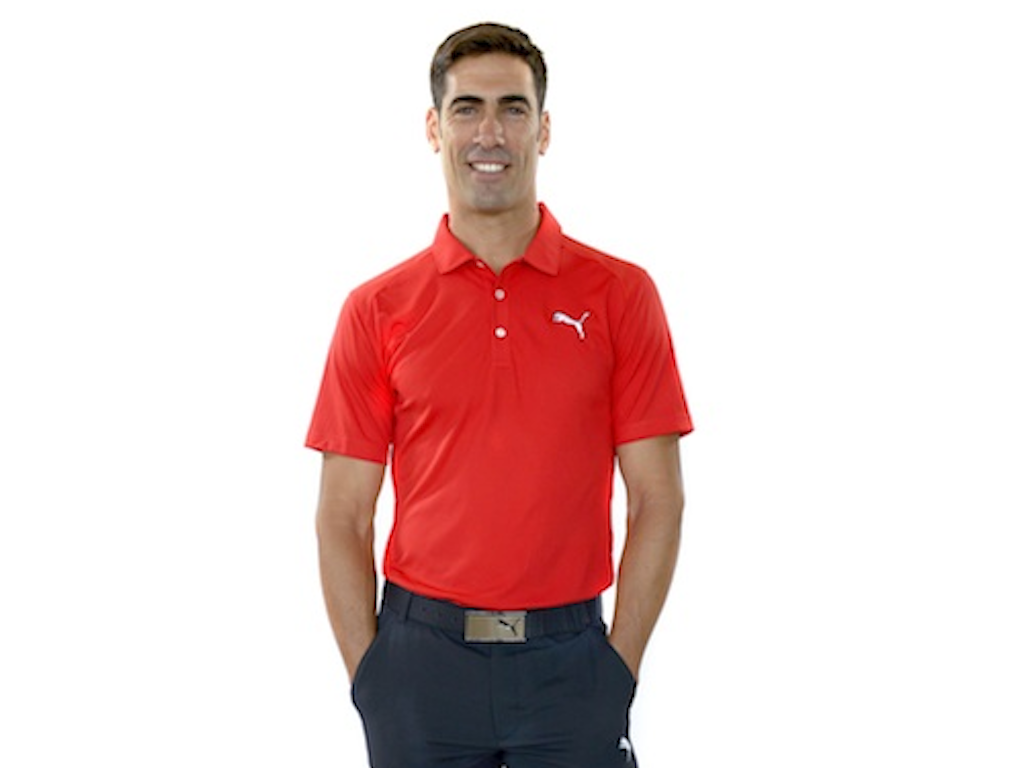

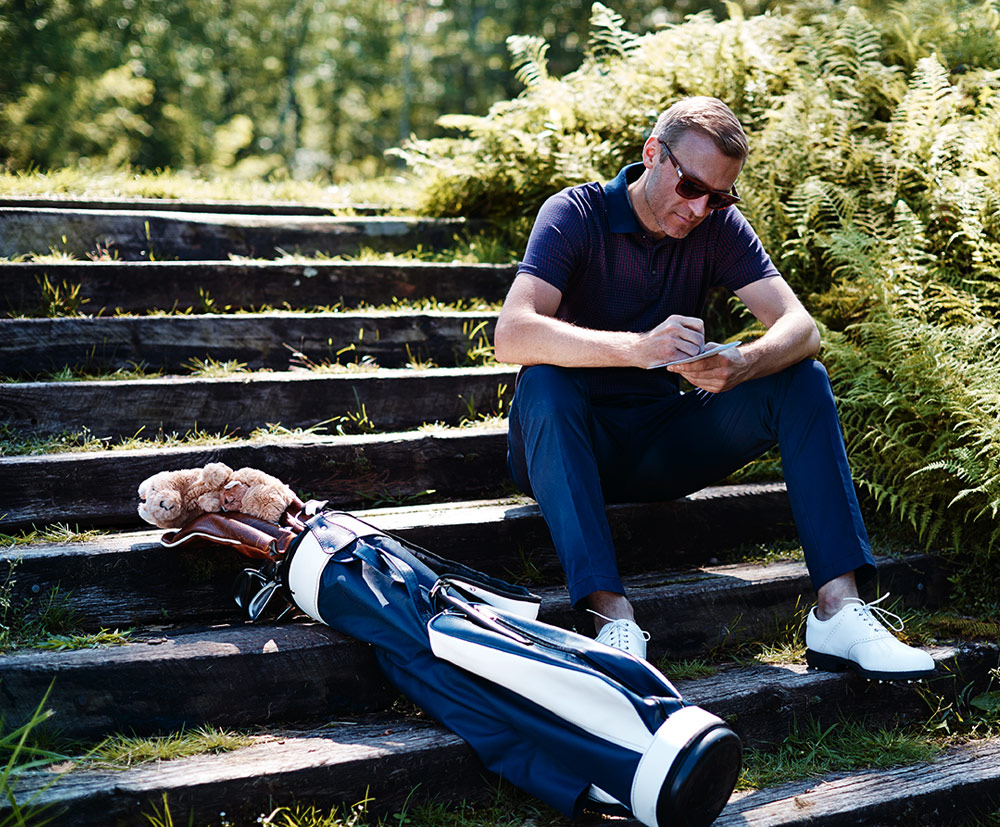
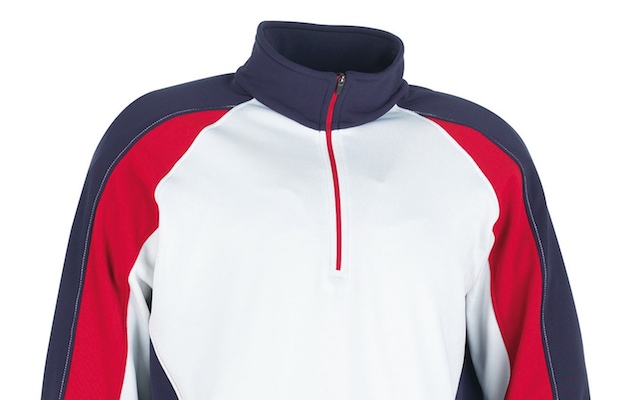








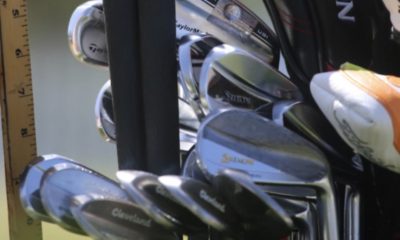





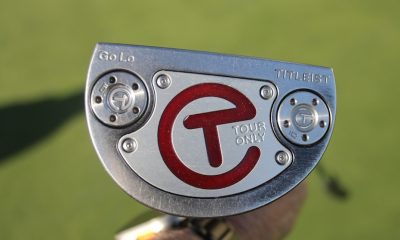

Pingback: Is Magic The Gathering An Expensive Hobby? (Cost Per Year) – Cardboard Keeper
Edward Emono
Apr 1, 2021 at 2:16 pm
How Much would you say on average golfers spend on Tees alone, yearly.
Pingback: How to Keep Training Through a Harsh Winter | RunnersOnTheGo.com
Pingback: How Much Does it Cost to Play Disc Golf vs. Other Sports
Pingback: Where have all the golfers gone? | Absolute News
Pingback: ?Where have all the golfers gone? | Louis's Deals & News
Pingback: Considering A Macgregor Tourney Junior Individual Woods
Ken
Sep 25, 2013 at 5:28 am
Living in the Nashville area, we have quite a few options for nice courses in the $30 range. Around 2008, we certainly experienced a ‘market correction’ in the cost of putting a peg in the ground. A local course offers a great week day deal for about $30 … 18 holes, cart, range balls, and lunch. And the course is definitely decent.
Miguel Dabu
Sep 7, 2013 at 1:50 pm
I have taken down the cost of golfing this season for me, from green fees to new equipment and clothes. I am now at a total of 1700 Canadian Dollars and I started playing again this season last May. That’s 5 months of golf cost and I still have some three weeks to go before it gets cold again.
So far I have played 30 rounds this year. Last year I started playing golf again after a long time of stopping. I got Taylormade Burner 2.0 irons and Superfast driver and woods, Odyssey putter and Cleveland wedge, then add the golf shoes. More I less I have spent 1500 dollars on equipment alone. Add the green fees and I am looking at another 800 dollars maybe.
So far in two years I have spent 4000 dollars in golf. And that’s just 5 months of golf per year.
Jordan
May 19, 2013 at 3:11 am
Great post as always. I like how you broke it down into 3 sections of the different golfers. I find my self spending more each year I guess I have passed out of the middle tier. Love the WRX!
Dan
May 15, 2013 at 5:02 pm
Golf might grow if disposable income grew as well. The problem might not be golf at all – it just may be feeling the effects of something bigger.
Bill
May 11, 2013 at 12:19 am
Good piece and some good thoughts. I think of how my father got all of us kids into golf. Started at the local driving range, where he showed us the basics and let us learn along the way. We graduated to a very inexpensive college course (Family seasonal rate was something like $400 for the whole family). Only about 5200 yards, which was perfect for kids learning the game and short enough for mom to join in. We were taught the etiquette and to be respectful of the employees of the course. As time went by mom would drop us off early in the day and came back at a designated time that allowed us to play a round and then invent putting games until she came to pick us up. The course got regular play and all was good. We got better and had the good fortune of having a father that loved the game and enjoyed playing the game with his kids as much as with his buddies. This lead to a number of trips to Pinehurst over the years and made all of us lifelong fans. The key isn’t necessarily pointing a finger at the courses or club makers. The father taking time to share his passion for the game in a fun way gave us the encouragement to work hard to get better and save our money for golf. Still, the point in the story about disposable income for median income folks hits home. Every year I hit a point in the summer when available time meets limited entertainment funds.
Some courses run specials to try to keep their doors open but many would be better served by making weekday golf very inexpensive ($20-$30 with cart) and keeping it real with weekend rates ($30-$45) all the time. Make juniors rates $10-$15 after school a couple days a week. Leagues can be done in mornings and a couple evenings a week.
I drive around and see empty courses all week long. The ones that stay busy are the ones seeing the realities of modern life. The end of corporate tax write offs for golf has virtually killed private clubs. Not judging the action, but at one time golf flourished partly because so much business was done at the course over 18 holes. Women were learning the game and fighting to get into male dominated clubs for a piece of the action. The media still promotes that story but its long gone. I see a few wives out there but I bet a big part of the drop off in play is among the women. The decline of “Tiger mania” is a factor but the IRS has played a role also. Its a different game commercially than even 10-15 years ago.
CPOMustang
May 10, 2013 at 8:29 am
I see the USGA’s newest idea to “grow” the game is a bigger emphasis on 9 holes. While it sounds good in theory it will NEVER take off unless and until courses stop gouging 9 holers for 80% of the 18 hole rate. One local course has an 18 hole rate with cart for $40. 9 holes…$32 with cart!! Really?? No one is going to play 9 at that price point, so a guy who only has time for 9 doesn’t play at all and a potential customer goes out the door. Then semi’s and muni’s wonder why their rounds/year are on the decline?
Richie
May 9, 2013 at 4:45 pm
Great fun article. It was a good read.
Richie
Richie’s World of Golf
Rich
May 9, 2013 at 7:59 am
Well it’s interesting, I talk with parents and they say it’s the cost of equipment , the time to set aside in taking them to the course and staying with them, the cost of traveling to the course ,the cost of a round of golf, and the parent not knowing anything or very little about the game. Now why not donate used equipment to these kids .Then maybe have instruction areas for the beginners closer to their homes.How about giving gas cards to those that bring their kids to the course for instruction maybe 10.00$? Surely there is some method that could fund giving these things . The adults say it’s to costly to play. Equipment is must to expensive. And by the way the PGA trade-in guide is not even close as to what the equipment is worth base on what was paid when new. I can’t find a name brand driver for 30 to 40 bucks on Ebay . I don’t see as many tournaments for stroke play ,just scrambles where it’s cheat cheat. Heck who knows, lower the price and see what happens.
Bob Weiss
May 8, 2013 at 5:05 pm
I love this thread
brilliant how the American PGA and others have not grasped the concept that golf should be for EVERYONE
With that in mind Scotland has or is trying to as well to some extent the UK in general make golf available to all and sundrie with many many different schemes to encourage golf at primary school and secondary school
Our regional golf unions throughout the UK do massive amounts to highlight and promote golf to all
In Scotland green fees are as low as £10. 00 pr mid week and in Kent where I live you can get a game for £15 mid week or £20 wk and in general most courses throughout the uk are good to play albeit higher than 12 handicapper
The elite golfers would want to play better courses but for a knockabout 90% of the courses here are ok to good
Anyway rant over
Enjoy the time you play golf it’s the best feeling in the world smashing that drive into the blue sky and holing that birdie putt
Regards
Bob
Adam
May 8, 2013 at 1:20 pm
I have three kids who play (oldest is 18), and I can tell you that paying for the entire foursome yourself gives you an entirely new perspective on the cost of golf.
Since golf in my area STARTS at $40 a round for MIDWEEK play, you can bet that I look high and low for specials and coupons.
However, I have found the Holy Grail for dads like me: a course with reasonable rates ($49-65 rack rate) that has a $10 Junior rate (including cart)! Oh, and that rate is good anytime, 7 days/week! The only trouble is that it is an hour away…. It’s a fun course, and I have brought my buddies there, too—not just the kids—so it is a win, win. And guess which course my kids love the most? You bet, it is this one because it’s the one they have PLAYED the most with Dad.
Ironically, the munis here are the worst offenders when it comes to Junior rates. (Very little discount, have to be a resident of the right county, have to purchase a multi-round pass, etc.) As you can guess, I rarely play the munis—and never with the kids.
We keep pace of play by having the kids play from the correct tees—even if that means teeing off for the par 4s from only 100 yds away (on the fairway).
lcompy
May 8, 2013 at 1:19 pm
People like Nicklaus and Norman want to grow the game, but then they go out and build courses that cost $200 or more to play. How is that going to grow the game ?
JBro
May 6, 2013 at 12:52 pm
This is a great piece of research in that it addresses this prohibitive portion of the game. I do wish someone would write an article about how golf treats it’s young people: LIKE TRASH. The powers that be always want young people to play and give them opportunities. However golf is ridiculously tough on people under the age of 18. Everyone from teaching pros, to course staff, to salespeople treat junior golfers horribly. I think anyone who took up the game at a young age remembers an old man or woman giving you a hard time for SOMETHING, they always assumed you were up to something wrong or doing something bad. Give kids a break, be nice to them and show them the way, that is how you are going to grow the game.
KCCO
May 6, 2013 at 3:53 pm
Agreed, why I give a good friend, one of our members who is president of LA chapter of First Tee program mucho props….but do feel bad for other juniors doing it on their own. If your school is fortunate enough to have golf programs, take advantage as it does help, but not offered everywhere. Anytime I come across junior or equipment I won’t be using, I have no problem donating to programs, driving range, etc….I won’t mention any names, but there are major oem’s making major contributions to these programs at end of season with leftover tour gear.
Simo
May 5, 2013 at 4:55 am
Interesting article! I’m from Australia and golf memberships range from as little as $300 for annual public access courses up into the high thousands for the top of the range courses. Move down under! Problem solved 🙂
Twoody
May 4, 2013 at 2:31 pm
I don’t care about your clubs, ball, tees, clothing, car, house or companions… all I want is for you to KEEP PACE WITH GROUP IN FRONT OF YOU!!!
yo!
May 4, 2013 at 11:25 am
frankly, most golfers could care less that more people play the game. that would mean more crowded courses, 5 hour rounds, higher green fees, and those like me retreating back to our private courses
of course i understand the golf industry would make more money if there were more golfers but it won’t benefit the recreational golfer and the game of golf is not ever going to die
Austin
May 4, 2013 at 7:34 am
Good article and without reading all of the comments I am assuming there is a lot of sentiments supporting your advice. I love golf as it is my time to decompress from work and life in general. Picked the game up after I retired from playing other competitive sports. Wish I picked it up sooner but unless you were a member of a private club you probably didn’t pick up a golf club. I would like to see more support for those who love golf and want to get their own kids involved. It’s hard paying a fee for my 3 yr old when I want to go play 9 holes and bring him along. Love to see more courses to provide additional incentives as it would allow me to bring my kids much more often.
paul
May 3, 2013 at 9:22 pm
My wife said i had to quit if i couldn’t make golf affordable. so im buying a punch card and playing at 5:30 am so it doesn’t affect my work schedule.
JE
May 3, 2013 at 5:07 pm
Very compelling article. I would agree with most of the analysis except for the costs of rounds. Particularly in the “Novice” analysis. I have lived in many states throughout the U.S. and haven’t found $25/round in anything other than a goat track that is borderline unplayable.
In my opinion, the fundamental problem with growing the game is competition from other activities that don’t require the investment in time and money.
I would also add that the trend is your friend. It’s going to take a lot more than the PGA to turn this tide.
Xreb
May 5, 2013 at 3:35 am
I have to disagree with this, a municipal course here in southern Tennessee offers a round for about 30 with a cart and it is no goat track ! It is on par with the Jack Nicklaus designed Bear Trace that I also play….
Puddin
May 3, 2013 at 4:31 pm
Great article. Here’s how get players into the world of golf. I tell beginners that have the bug to volunteer at their local club as a starter, ranger or “transportation manager”. Most clubs will let you play for free for your time. I also tell them if they are serious to take lessons FIRST! Banging balls on the range does not make Johnny a better player. I did this when I was between wives and lives phase. Too broke to play so I volunteered at my course. Then I was reciprocated at other courses. I dont think I paid for a round of golf for about 5 years. There are a lot of perks that come along when you volunteer.
Mike
May 3, 2013 at 5:43 pm
excellent idea. i am going to do this.
evanm
May 3, 2013 at 3:53 pm
Simply put, munis in larger areas need to drop their rates and in general do everything better. Living in Seattle it drives me crazy with how bad of an experience you get for on average $40 a round. Munis generally have good deals for juniors and their parents but they need to promote it more.
I think in school would be a good idea. I had a random PE class in junior high that focused on different stuff like archery and we did golf for a while, more of this would be good. What about golf field trips? If courses hosted this for free it would grow the game a ton. You can’t tell me there isn’t time for this in school, more often than not there is a lot of wasted time in school. I think most kids would love golf but for many it’s a foreign subject since so many other sports are accessible but probably not for much longer considering how competitive everything has to be now. Kids are no different from adults on how easy they can get hooked on the game, it’s just that adults have more exposure due to financial reasons.
Chuck
May 3, 2013 at 3:11 pm
I like where the author is going with this, but prices for the beginner were too low. My knowledge of the market has 50-100% higher values for a lot of stuff, and even the PGA Value Guide shows a good set of Ping G20’s at $436.89 He also left out some of the golf geek purchases, like irons). A bigger problem is that he didn’t discuss time. That’s the real killer, in terms of changes in the amount of time available for golf (and the size of each block of time available), the time required to play, the demands on adults with children at home, and probably most importantly, the amount and type of time available for kids to learn about the game. They can’t sneak off to the golf course because people live in suburbs, free time is scarce or intentionally filled with lots of lessons and whatnot, and kids can’t go out on their own (for more than one reason). In other words, the society built by the baby boomers, and inherited by the rest of us, quite frankly sucks, especially (but not only) in terms of freedom to play golf.
Doug
May 3, 2013 at 1:41 pm
Why does no one ever point out that Tiger created artificial unsustainable growth to the game? Its just now coming back to where it should be. When I played as a high schooler courses had just the right amount of traffic. After Tiger you had all these idiots taking divots in full Nike outfits. Rounds went from 4 hrs to 6 hrs at the muni. Personally I hated the growth and I’m glad to see the game lose some interest from the Tiger followers. Golf isn’t going anywhere and I’m not worried about growing the game.
Bryan Wood
May 3, 2013 at 12:51 pm
Chris – Great Article! After reading this it is official – I am Captain Staff Bag! You forgot to add the cost to have your name embroidered on your golf bag – which is about bout $80 LOL! Keep the good reads coming our way!
From the peanut gallery….
I play a lot of recreational golf – meaning I am not a member of a club, but I should be. I am a 5 handicap and play at least 125 rounds a year – weather promoting. My wife plays as well but she is not quite at the Captain Staff Bag level yet, however, we both play on an amateur golf tour and enjoy tournament golf.
To focus on the cost of golf, I would like to turn the table on the decline in the game… and put that on the public courses and here is why…
I have noticed a significant increase in the cost of greens fees in the Austin TX area, over the past few years (now you know where I am from). I also travel to many golf destination vacation areas and have paid over $400 in greens fee before. For my recreational golf (public play), I will mainly use the one of the ‘discounted tee time – distributor providers’ (not named here, but I am sure you know who they are). There prices has also increased over time as well.
Sometimes, I will just call on a Saturday morning to one of the local tracks around here and see what the first available tee time is – and the rate. Sometime they will say we have an 8:30 open, and the rate is $79 a player – on a course that I think is worth $35-$40 based on the condition it is in. I always start bartering immediately, saying I will offer $45 a player and I will bring a foursome. The person on the phone in the pro shop usually says no. So, now, two things happen 1. the course loses revenue, and; 2. does not fill the tee sheet up. Who wins? – no one.
The other thing that also drives me crazy is the way courses handle their twilight rates. You will see players sitting in the parking lot at one public courses around here, knowing the twilight rate starts a 2:00pm which is usually $10-$15 cheaper than the 1:50pm tee time. The 1:50PM tee time is always open by the way… and it is first come first serve for twilight. Again, a prime example of lost revenue on open tee times before 2:00pm in this example. Now the mad rush begins and the course is packed and play is slow after 2:00pm.
(Slow play is a whole other issue not to be addressed here but basically, people need to learn how to drive golf carts to their ball, instead of sitting in the cart, waiting on your partner to ball, so they can drive you to your ball after they hit… I will stop there on slow play…)
The Golf 2.0 mission released by the PGA really needs to get it together and have talks with their professionals at the public facilities. You grow the game at the recreational level – not limiting it by the examples I presented above.
Speedster
May 3, 2013 at 12:51 pm
Love the game, always have and always will. problem with golf is the pace of play is killing the game and killing the courses. first off most courses hire marshals that don’t know anything about pace of play. they are there to socialize and not work. i don’t mean to be sexists or stereotypical, but most causal and lady golfers can’t grasp the concept of keeping up with the group ahead of them. they think that if they pay a green fee they are entitled to do whatever they want. once again this a social issue that plagues western society. Even when i step onto my home course i feel priviledge/fortunate to play and have never felt the course owed me anything.
Logistically and economically speaking courses are in a tough spot in today’s market. To gain revenue, they can only do 1 of 2 things, raise green fees or increase green fees sold. (either of them is not viable since they typically have an inverse relationship). there are no more options, F&B, clubhouse, golf shop, clinics, lessons are all limited in terms of gaining revenue. Course owners sooner or later will come to a reality that golf is a hobby and hobbies are meant to be enjoyed and not meant to make money.
MACS
May 3, 2013 at 11:30 am
Great article, I just wish I didn’t have so many things in common with “The GolfWRX-er, aka Captain Staff Bag”. Fellow WRX-er’s fibbing about their club head speed, launch angle, smash factor, etc…? Doesn’t everyone hit a 3-wood 300 yards?
Dan
May 3, 2013 at 10:58 am
Great article. I agree so much with the suggestion above about teeing it forward. I play in a weekly league with a bunch of great older guys, but they hit it 210 off the tee when they catch it, and insist on playing the 6500 yard tees. End result, everyone shooting their age for 9 holes at a pace of almost 3 hours. There are about 10 of us younger guys with families to go home to, and we’ll have to quit if things don’t change.
David
May 3, 2013 at 10:57 am
You forgot to mention the annual/bi-annual Vegas/Myrtle Beach/Orlando golf trip that can easily double the enthusiast’s tab, depending on the preferred swing lubricant.
Excellent article and really demonstrates how much I appreciate treating myself to lovely day outside. I worked hard to afford this stuff, so to piggyback off your theme to engage:
Show how the discipline to play can be weaved into the discipline to do well enough to afford the WRX’er lifestyle.
Mike
May 3, 2013 at 10:15 am
I hate to say it but this article is true. In my heart I knew of the total cost but was in denial. This pretty much validates my feeling towards the sport. Sometimes the mind over powers the heart and it is something one should listen when growing up especially when things become priority eg. school, post undergrad school, marriage and the death of all; having kid(s).
CS
May 3, 2013 at 8:17 am
2024 is 11 years away.
TD
May 3, 2013 at 7:09 am
You think golf is bad try having a kid play hockey!
Willie
May 3, 2013 at 3:04 am
Great article, and I hope it catches on. I agree that we need more incentives to start at the jr. level.
I’ve said this before in the forums, but if you look at starting golf, by comparison, it’s outrageous. A child (or even a starting adult or college player) could play in a baseball, soccer, basketball, and casual tennis league all for less then the annual first year of golf. Price to pick up all those sports, less then $20 and a couple of people (who could split the cost). OR golf, where you can hardly go to the range for 30-45 minutes at $6-12 / bucket / person.
For people say that golf isn’t the most expensive hobby, you’re right, it’s not. But expensive hobbies don’t grow, and golf wants to grow.
Chris
May 3, 2013 at 10:35 am
When looking at starting a kid in Golf a parent needs to explore their local First Tee program. Most of the time they won’t need clubs and the expense is typically the same or LESS (then other organized sports. Here are our local First Tee actual costs:
Individual – $50.00 per session, $30.00 Second session. (yearly max $80.00 Financial assistance is available, just inquire.
Family -(2 or more children) $ 80.00 per session, (yearly max of $100.00 per family).
Wee Level -$25.00
As a parent of five kids, all under the age of 12, golf for them doesn’t cost as much as their other sports. They play basketball, baseball and soccer each of these after league and camps fees and gear run about $175.00 to $250.00 per sport per kid.
My kids usually like to tag along with me at our public city owned course and hit just a few shots. They have the most fun when we play in Parent Child alternate shot tournaments where parents tee off on all odd numbered holes and kids “tee it forward” on evens.
Willie
May 5, 2013 at 12:00 pm
That’s great info to have, and defiantly helps to explain why the First tee is so loved!
Mat
May 3, 2013 at 12:28 am
We need to stop making golf hard. Everyone without a handicap should be playing from a forward tee. Until your handicap is below 20, go forward. Emphasize that difference. PGA and tournaments are long, but most experiences should not be longer than 5,000 yds. Until this happens, you have people playing from the tips frustrating everyone.
If courses are able to emphasize the correct difficulties / tees, everyone will enjoy more.
CPOMustang
May 3, 2013 at 8:14 am
In the last 6 months I moved up to the “senior” tees. I had always played the standard men’s tees (never the Tips). I decided I am too old to let my ego get in the way and never cared what other people thought anyway so I moved up. Best decision I made. I still stink up the joint now and again but its a lot more fun hitting a long iron on my second shot vs. a fairway (which I still cant hit for s#*)
fairway fitter
May 3, 2013 at 12:19 am
I grew up in NYC in the 70’s and used to cut thru a hole in the fence at the local public course. The hole was located in the middle of the fourteenth hole. I could wait for a group to play thru, jump in and play as many holes as possible before dark. The key to my success was that I was respectful of the course and the other players. I never made waves or held anyone up. I was a kid with a love of golf and respect for other people, so nobody ever complained that I hadn’t paid.
If I had to fork over the kind of coin I pay now (even super twilight rates) as an 11 year old I’d probably be a half way decent tennis player instead.
dakota jones
May 2, 2013 at 10:15 pm
Really great article, as a freshman in college our local course in high school did not even acknowledge us as juniors we had to pay the adult rate to play and because of this (I paid for everything golf related my parents want nothing to do with the game) we could not get kids to come out for the team because they didn’t have the money to pay for it I was lucky as I mowed yards throughout high school to fund golf, but rebuilding golf ABSOLUTELY has to start at the junior level.
george
May 2, 2013 at 9:47 pm
golf is expensive but not as expensive as many of my other habits
free
May 4, 2013 at 7:59 pm
it can be…Youch, I just realized my annual club budget is about what the super expensive option is…better not to think about the cost…
Edward Kennedy
May 5, 2013 at 4:10 am
Are you in a “Private” or a public course? Here in Ireland there is very dew publics, and their terrible!
Edward Kennedy
May 5, 2013 at 4:09 am
What’s the Handicap George? I could definetly see myself spending a couple of grand over a couple of seasons. Golf is expensive, but I can’t see how anything else you do could cost more. And if it does, its probably killing you!
KCCO
May 5, 2013 at 9:26 pm
Whether I like it or not, it’s my obsession…. My wife spends on her habits, (which are very close to a private course and witb (meaning clothes bags etc over a year), but I also don’t spend at the local bar, gamble, or have any other habits….I did cut smoking out of my unnecessary spending as an agreement with myself to get a private course membership. But with that being said, golf is cheap compared to boat hobbies (cleaning, storing, maintenance) and race cars which lots of my friends have tens of thousands every few months dumped into a 1350 foot sprint down the track that could cost them astronomical figures pending outcome. To each is own on how you want to spend your money. I feel like I work hard for my hobby, but have no regrets, it’s what I love. I do like having latest greatest gear, when its feasible, I buy… But you get to a point where you know when you have enough, or have made enough connects by spending time at the course to find equipment through friends who are reps, guys who constantly buy/sell etc, u can keep up with whats latest on shelves or off the van;) Regardless of price, and an 8 index, I do what I have to to continue to play the game I love. That extra day of work each week pays off when I come home at 3:30, and can play 9 every weekday, or hit the range, and have my weekend crew of guys that all do the same to make it happen playing 18 holes of my favorite thing to do. To each is own, do what makes you happy, and you will figure out a way to make it happen. When the bill comes you will figure it out if you love it that much.